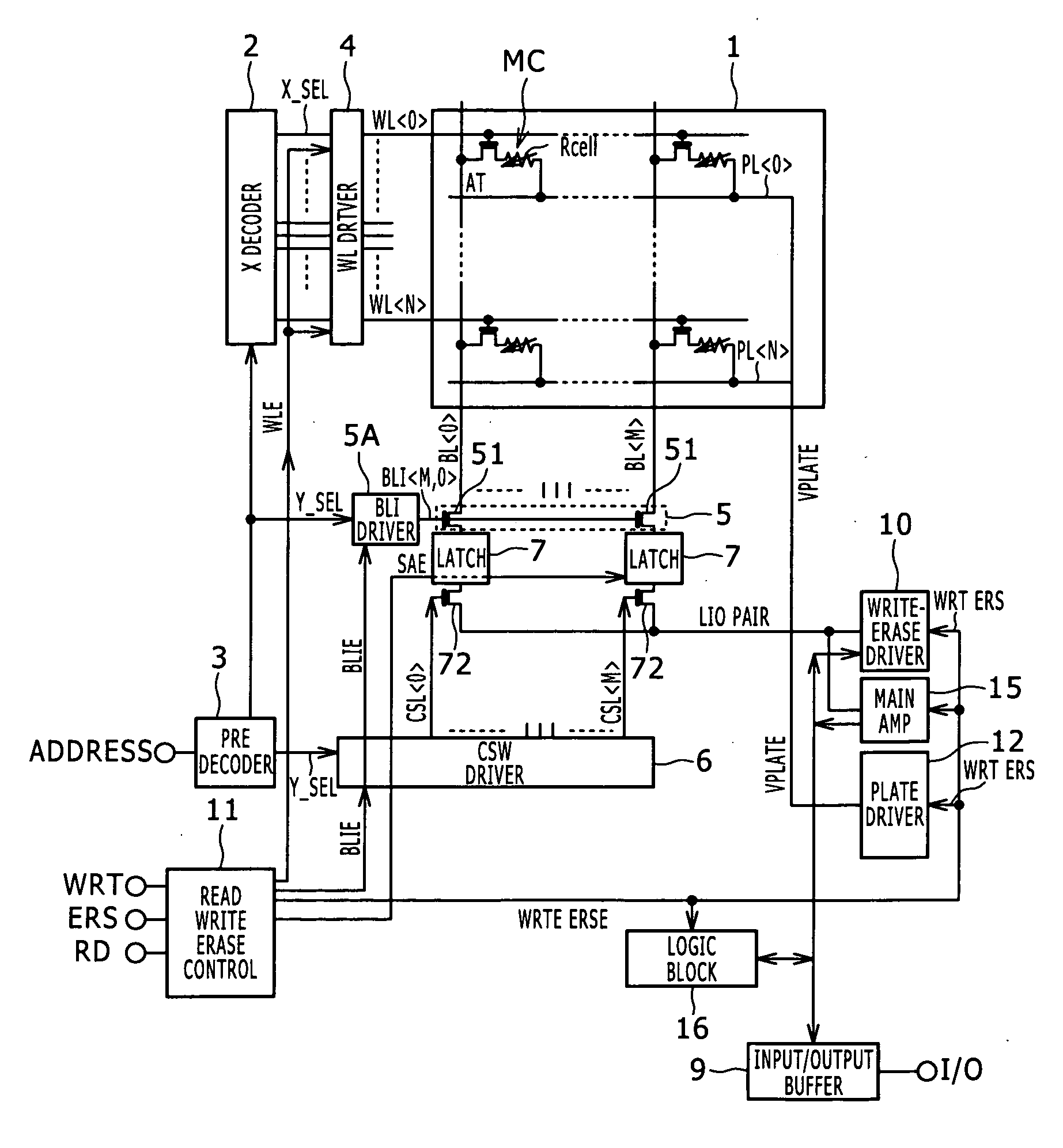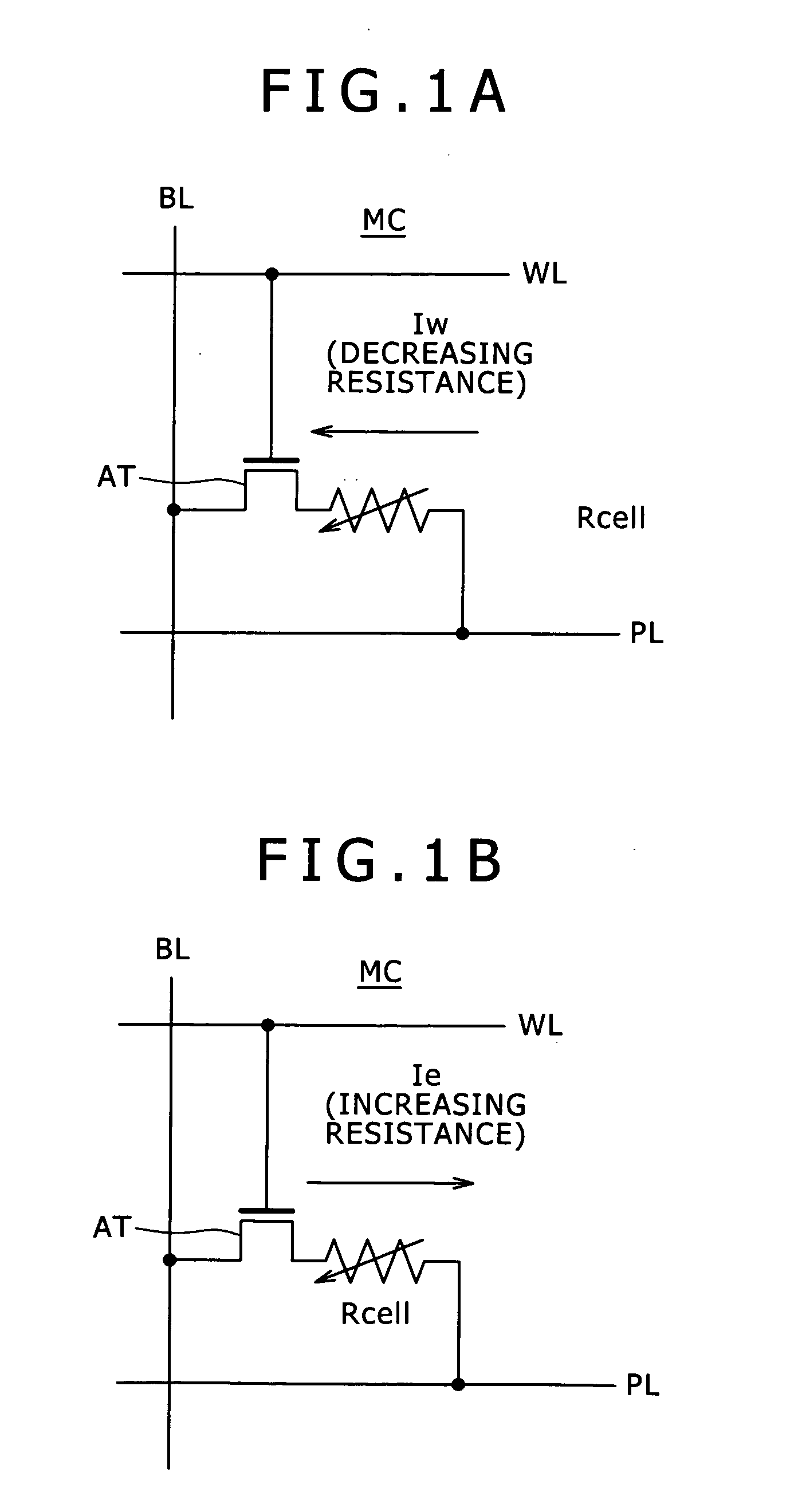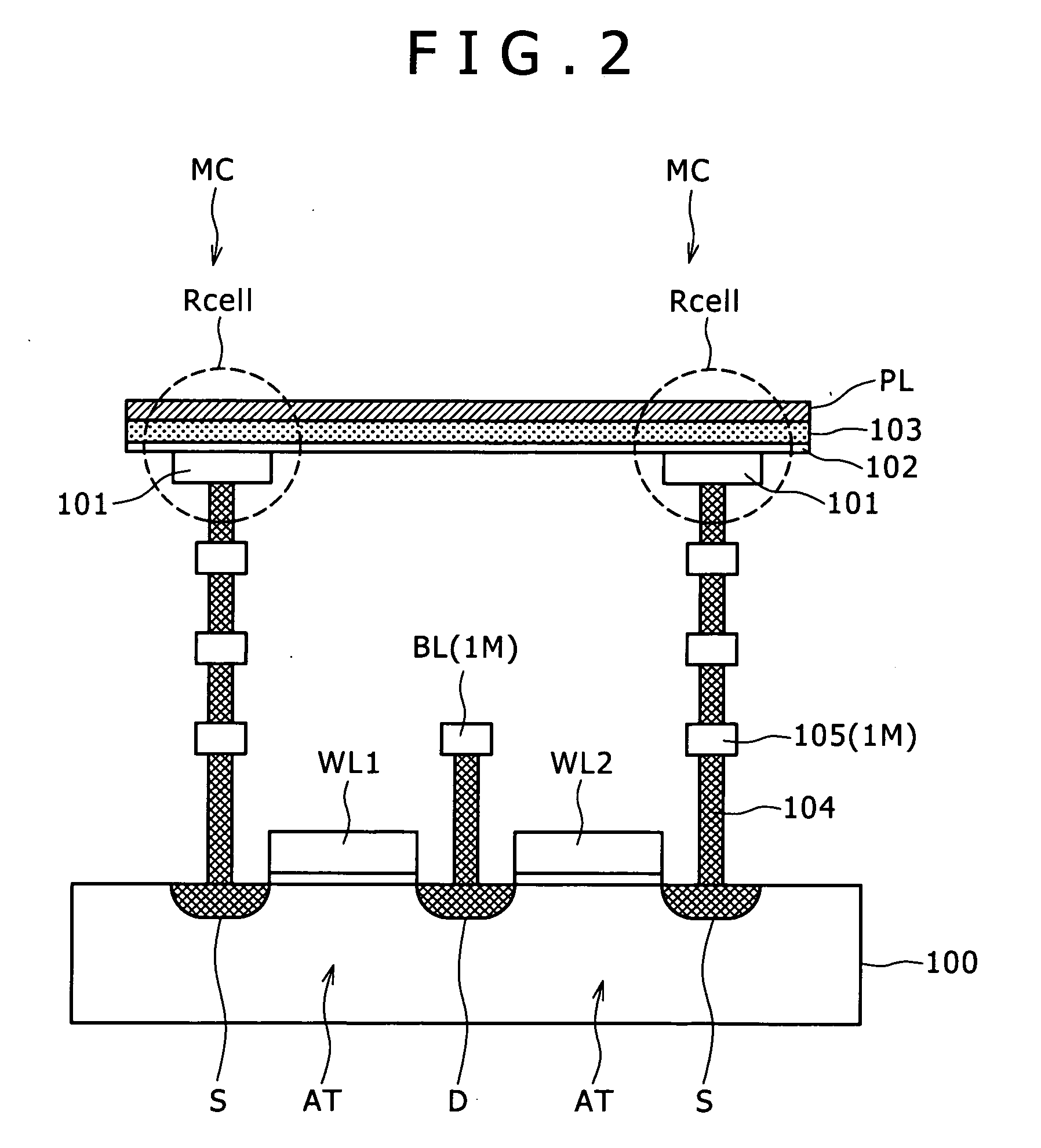Semiconductor memory device and its operation method
- Summary
- Abstract
- Description
- Claims
- Application Information
AI Technical Summary
Benefits of technology
Problems solved by technology
Method used
Image
Examples
first embodiment
Configuration of a Memory Cell
[0077]FIGS. 1A and 1B are a plurality of diagrams each showing an equivalent circuit of a memory cell MC common to embodiments of the present invention. To be more specific, FIG. 1A is a diagram particularly showing the direction of a write circuit Iw in the equivalent circuit. On the other hand, FIG. 1B is a diagram particularly showing the direction of an erase circuit Ie in the equivalent circuit. As is obvious from the diagrams of both FIGS. 1A and 1B, the memory-cell configurations themselves are identical to each other.
[0078]The memory cell MC shown in each of the diagrams of FIGS. 1A and 1B employs the variable-resistance cell resistor Rcell and an access transistor AT. Used as a data storage element, the variable-resistance cell resistor Rcell is a resistor having a variable resistance.
[0079]A specific one of the two ends of the variable-resistance cell resistor Rcell is connected to a plate line PL whereas the other one of the two ends of the v...
second embodiment
[0245]FIG. 18 is a circuit diagram showing the configurations of a column of memory cells and a BLI driver 5A which are provided in accordance with a second embodiment of the present invention. FIGS. 19A to 19K are a plurality of diagrams each showing the operation waveform (or the timing chart) of a signal for a case in which it is necessary to apply an additional data erase pulse to the memory cell MC in the event of an erase failure detected in the second embodiment. FIGS. 20A to 20K are a plurality of diagrams each showing the operation waveform (or the timing chart) of a signal for a case in which it is not necessary to apply an additional data erase pulse to the memory cell MC in the event of an erase success detected in the second embodiment.
[0246]The configuration of the column circuit shown in FIG. 18 is different from the configuration of the column circuit shown in FIG. 10 in that, the column circuit shown in FIG. 18 employs a PMOS transistor 52P in place of the NMOS tran...
PUM
 Login to View More
Login to View More Abstract
Description
Claims
Application Information
 Login to View More
Login to View More - R&D
- Intellectual Property
- Life Sciences
- Materials
- Tech Scout
- Unparalleled Data Quality
- Higher Quality Content
- 60% Fewer Hallucinations
Browse by: Latest US Patents, China's latest patents, Technical Efficacy Thesaurus, Application Domain, Technology Topic, Popular Technical Reports.
© 2025 PatSnap. All rights reserved.Legal|Privacy policy|Modern Slavery Act Transparency Statement|Sitemap|About US| Contact US: help@patsnap.com



